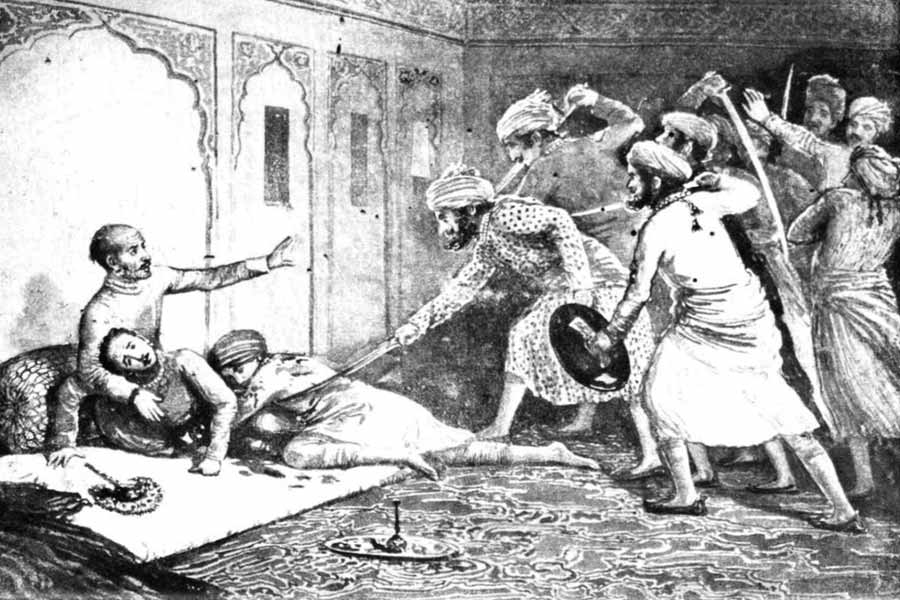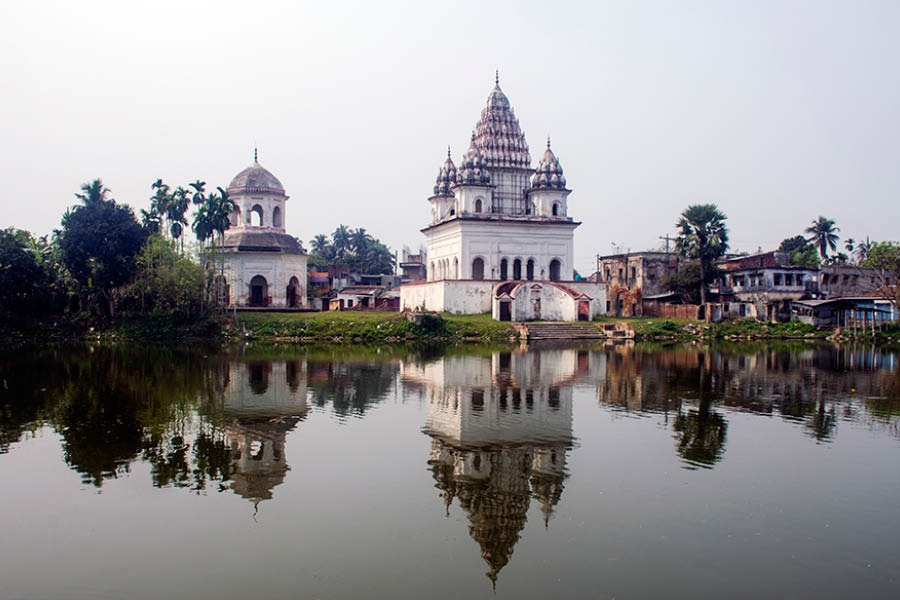Located in the shadows of the mighty Golconda Fort, lies a huge necropolis. It contains an assortment of tombs housing the mortal remains of the rulers of the Qutb Shahi dynasty. It ruled the Golconda Sultanate from 1518 to 1687. Hyderabad served as their capital from 1591 to 1687. Charminar, the famous landmark of Hyderabad, was a creation of this dynasty. Another important historical site of the city is the Qutb Shahi Tomb complex.
The complex houses the mortal remains of the seven (out of eight) sultans of the dynasty and is often referred to as the ‘seven tombs’. Contrary to the name, the complex houses several other tombs along with mosques, stepwells and various other structures. In all, the tomb complex spreads across an area of 106 acres and houses a total of about 80 structures. Presently, the tombs are being restored and the entire complex being landscaped under the guidance of the Aga Khan Trust for Culture (AKTC).
Tomb of Quli Qutb Shah (1st sultan, 1518-43)
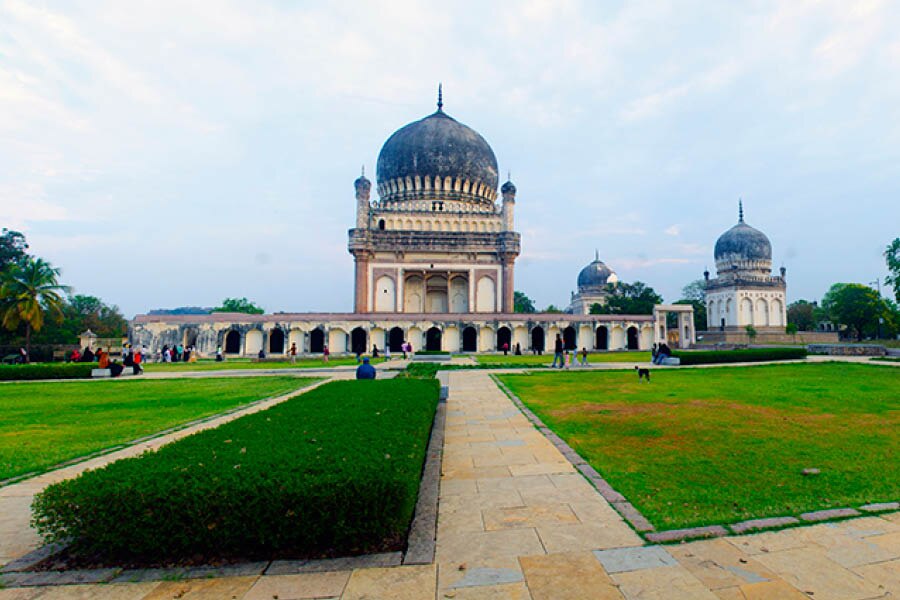
A panoramic view of the Qutb Shahi Tomb complex with Muhammad Quli Qutb Shah’s Tomb in the centre.
Also known as Quli Qutb-ul-Mulk, he was the founder of the Qutub Shahi Dynasty. He was born in Persia and arrived in India as a horse trader and later served under the Bahamani Sultanate. With the disintegration of the Bahmani Sultanate, he established the Qutub Shahi dynasty. After his death, he was laid to rest in a small tomb in the shadows of the original mud fort of Golconda. Over the years, the area surrounding the tomb would transform into a large necropolis.
Tomb of Jamsheed Quli Qutb Shah (2nd sultan, 1543-50)
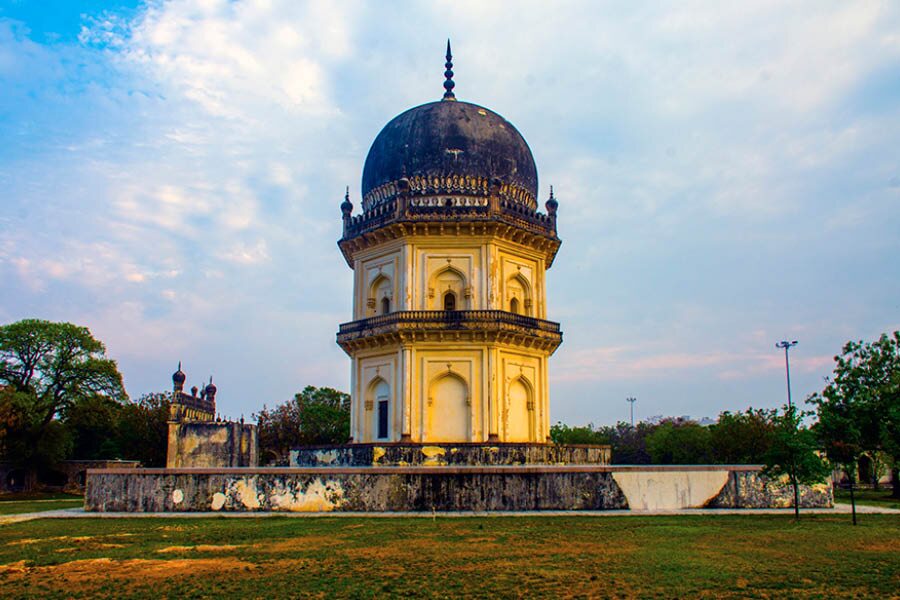
Quli Qutb Shah was assassinated by his son Jamsheed Quli Qutb Shah, who ascended the throne as the second sultan of Qutb Shahi dynasty. Apart from his cruelty, nothing much is known about his seven-year-long reign. After death he was laid to rest beneath a tower like tomb, presently located at the western end of the complex.
Tomb of Subhan Quli Qutb Shah (3rd sultan, 1550)

Tomb of Subhan Quli Qutb Shah and (right) that of Quli Qutb Shah.
Jamsheed Quli Qutb Shah was succeeded by his seven-year-old son Subhan Quli Qutb Shah. He died a few months later and was laid to rest in a small but elegant grave, which shares the platform of his grandfather’s tomb.
Tomb of Ibrahim Quli Qutb Shah (4th sultan, 1550-80)
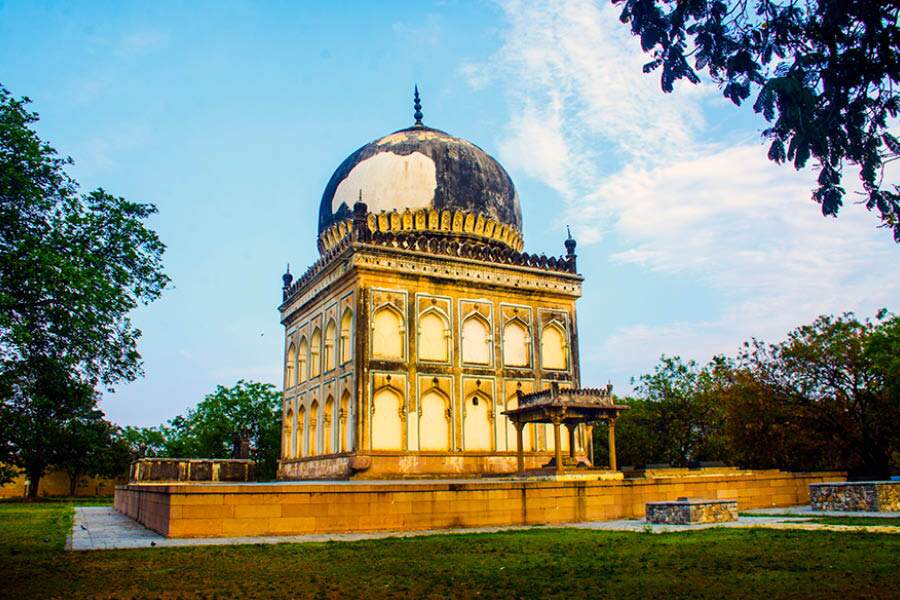
After Subhan’s short reign, he was succeeded by his uncle, Ibrahin Quli Qutb Shah. He was a liberal ruler and had a Hindu wife. After his death he was laid to rest in a beautiful tomb, which occupies the western part of the Qutb Shahi Tomb complex.
Tomb of Muhammad Quli Qutb Shah (5th sultan, 1580-1612)

The mortal remains of the fifth sultan lies under a mammoth grave occupying the central part of the complex.
Muhammad Quli Qutb Shah was the son of Ibrahim and his Hindu wife, Bhagirathi. He is remembered for the construction of the Charminar. During his reign, the Qutb Shahi dynasty reached its pinnacle. As the dynasty flourished, so did the tombs. The mortal remains of the fifth sultan lies under a mammoth grave occupying the central part of the complex.
Tomb of Sultan Muhammad Qutb Shah (6th sultan, 1612-26)
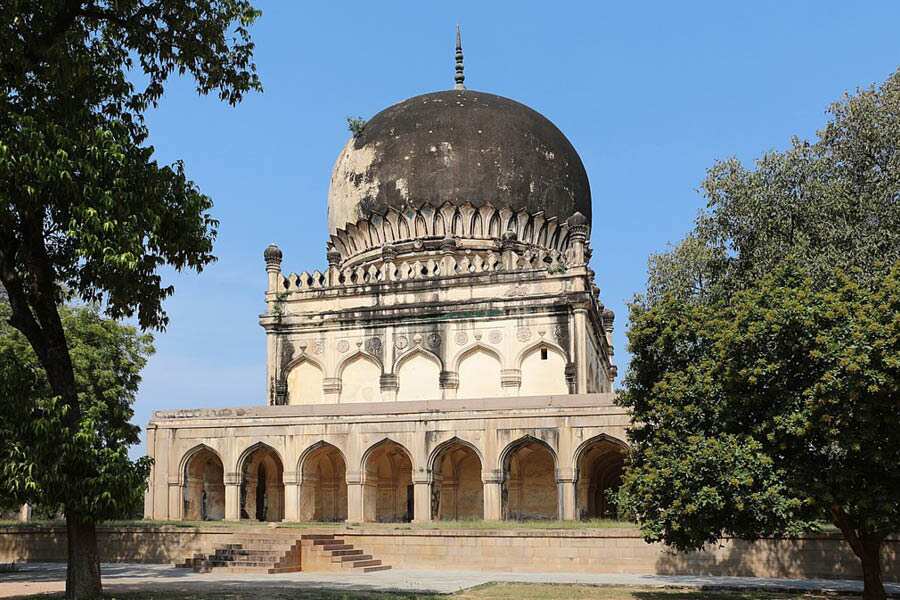
A spectacular domed tomb of Muhammad Qutb Shah who ascended the throne as the sixth sultan. Wikimedia Commons
Muhammad Quli Qutb Shah died without a male heir and had only one daughter, Hayat Bakshi Begum. She was married to her cousin, Sultan Muhammad Qutb Shah, who ascended the throne as the sixth sultan of Qutb Shahi dynasty. His mortal remains also lies beneath a spectacular domed tomb.
Tomb of Abdullaha Qutb Shah (7th sultan, 1626-72)
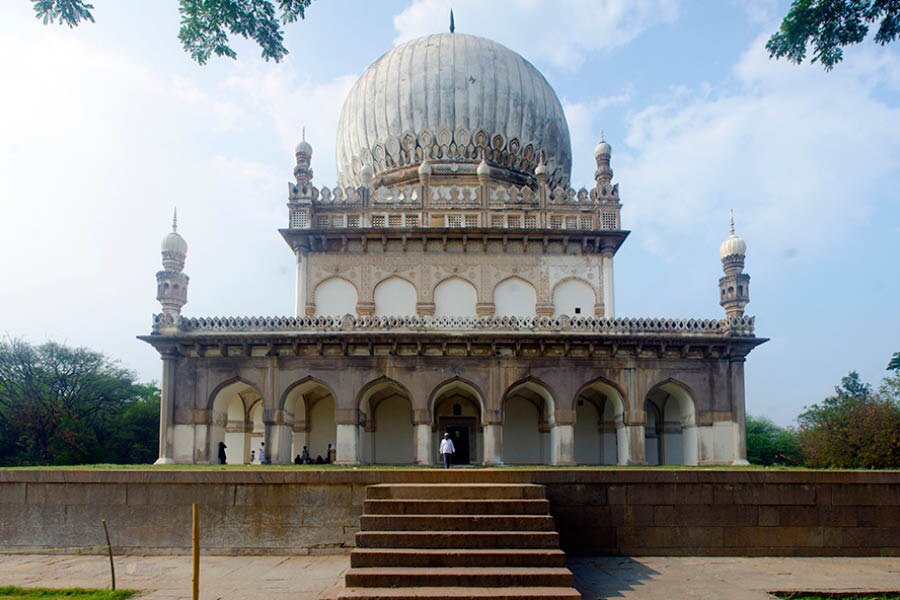
Son of Sultan Muhammad Qutb Shah and Hayat Bakshi Begum. This sultan has the most massive tomb of the Qutb Shahi complex. The tomb stands next to the entrance and welcomes visitors to the vast necropolis.
Tomb and mosque of Hayat Bakshi Begum (wife of Sultan Muhammad Qutb Shah)
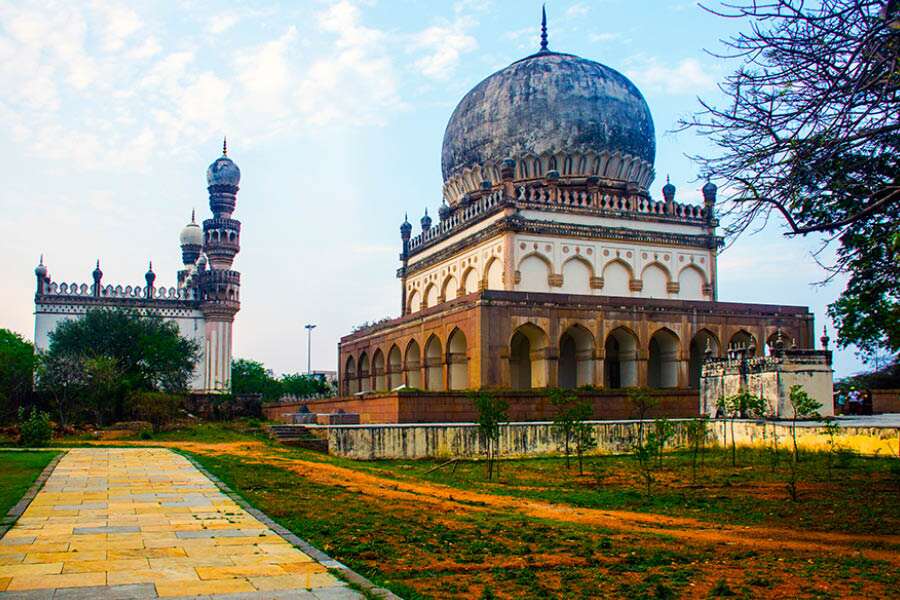
Hayat Bakshi Begum tomb with the Hayat Bakshi Begum mosque in the background.
Next to the tomb of Abdullaha Qutb Shah lies the tomb of his mother. Another gigantic tomb complete with intricate plaster work. Behind the tomb lies the great mosque complete with two towering minarets.
Incomplete tomb of Mir Ahmed (son of the daughter of Abdullaha Qutb Shah)
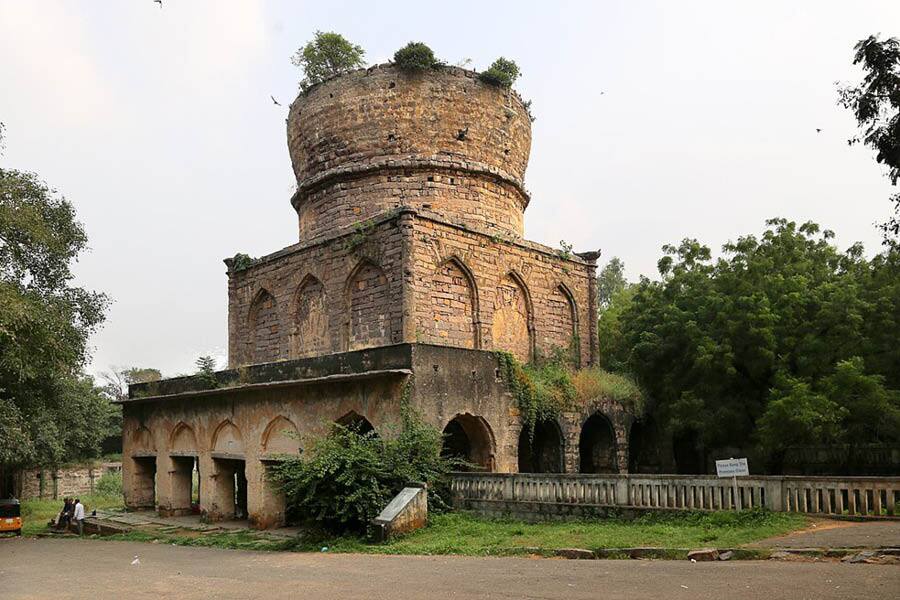
Mirza Nizamuddin Ahmed tomb with its unfinished dome houses the remains of Mir Ahmed. Wikimedia Commons
This tomb was originally meant for the last sultan of the Qutb Shahi dynasty, Tana Shah. It was during his reign the Qutb Shahi dynasty collapsed under the Mughals and Tana Shah was never been able to complete his tomb. The tomb with its unfinished dome houses the remains of Mir Ahmed.
Princesses Tomb (Fatima Begum and Kulsum Begum, respectively sister and daughter of Sultan Muhammad Qutb Shah)
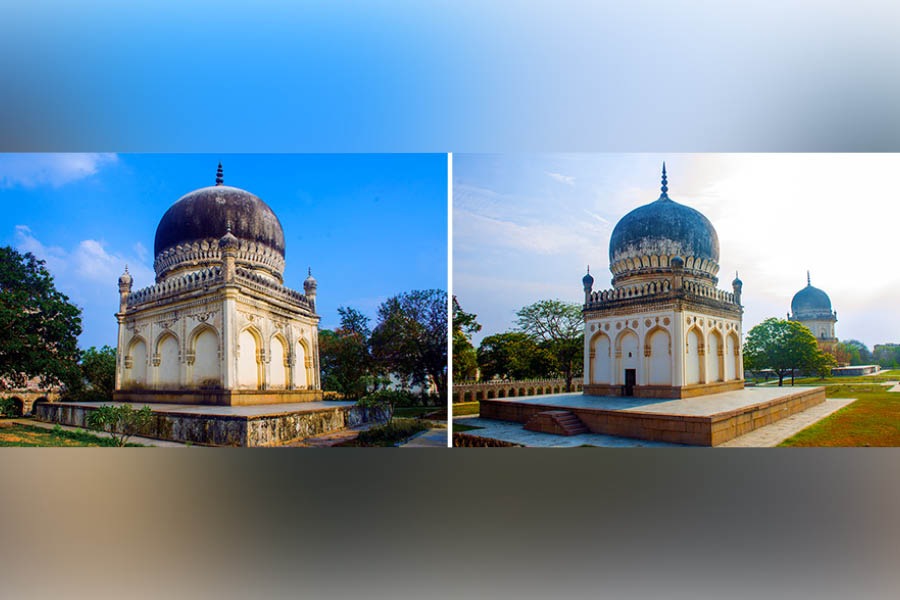
Tomb of Fatima Begum and (right) that of Kulsum Begum.
The tomb of the Qutb Shahi complex extends beyond the sultans and has a couple of tombs dedicated to the princesses, which includes the tomb of Fatima Begum and Kulsum Begum. They are respectively the sister and daughter of Sultan Muhammad Qutb Shah the sixth sultan of Qutub Shahi dynasty.
Hakims’, commander’s and dancers’ tombs
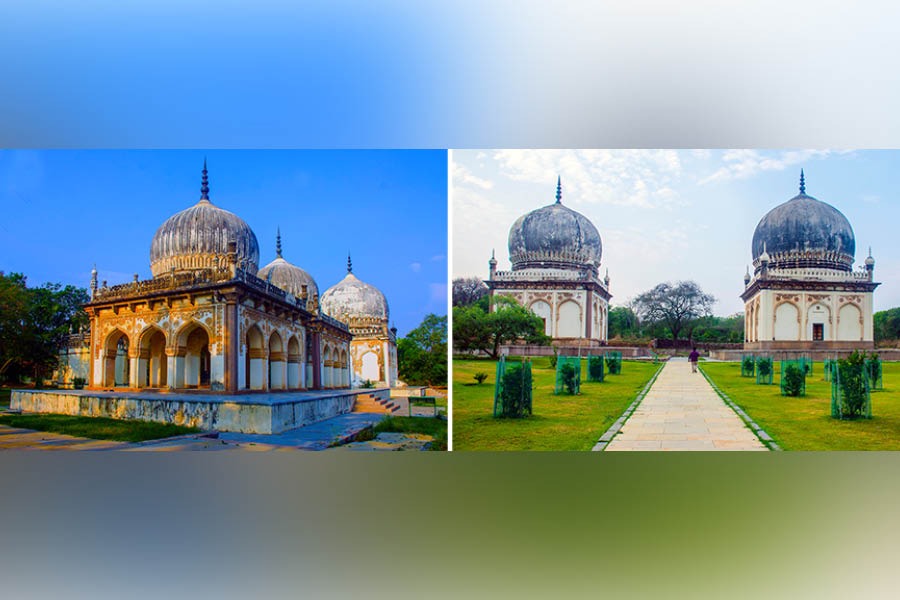
Commander’s and dancer’s tombs and (right) tomb of two hakims in the foreground and tomb of commander in the background and (right) tombs of Taramati and Premamati.
The tomb extends beyond the royal family and has tombs for a commander, two hakims and two dancers. The commander tomb houses the remains of Neknam Khan, commander of Abdullaha Qutb Shah. Next to it are the tomb’s of two hakims Nizamuddin Ahmed Gilani and Abdul Jabbar Gilani who served under Abdullaha Qutb Shah. Also in the complex are the tombs of Abdullaha Qutb Shah’s favourite dancers Taramati and Premamati.
More tombs and structures
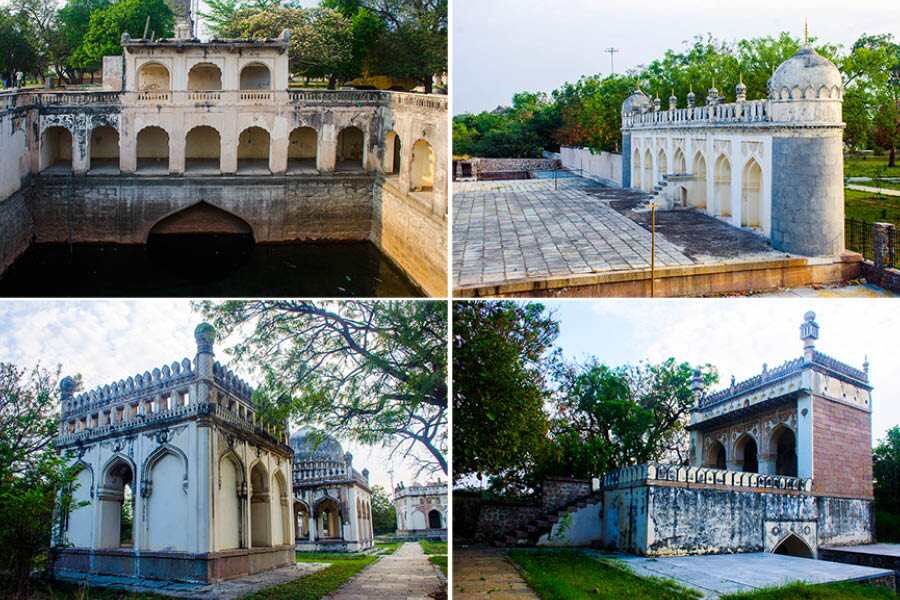
(Clockwise from top left) Badi Baoli (big stepwell), Idgah, small mosque and unknown tombs.
The complex also has many other tombs most of them housing unknown occupants along with several other structures which includes mosques, stepwells (baoli) idgah and pavilions.
Ornamentation
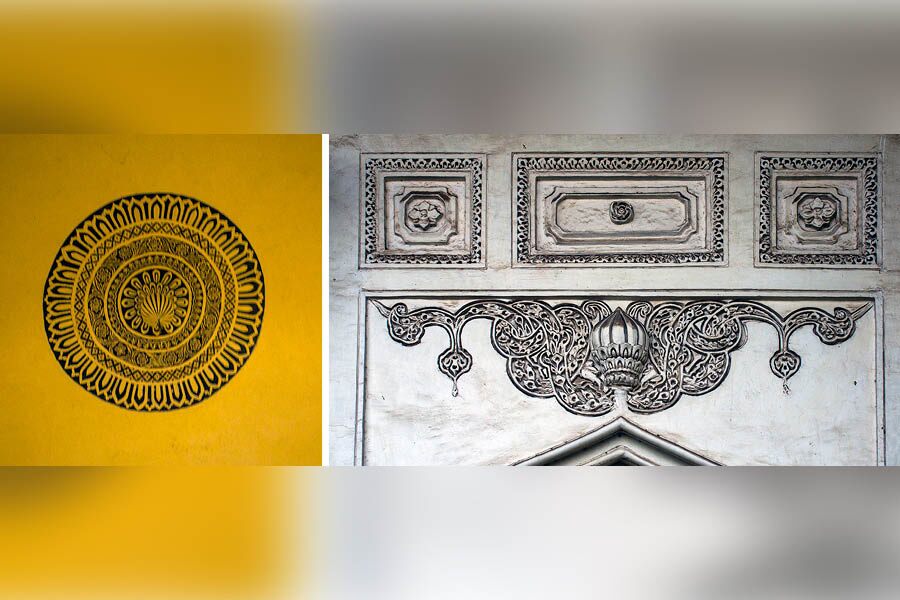
Ornamentation from the interiors of Abdullaha Qutb Shah and (right) that from the exteriors of mosque of Hayat Bakshi Begum.
Most of the tombs have intricate ornamentations complete with floral and geometric patterns.

